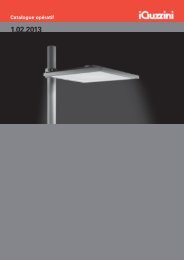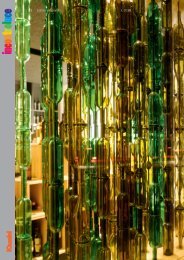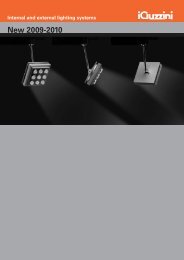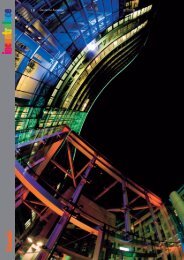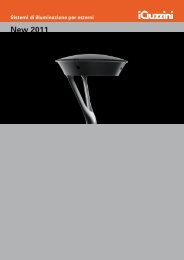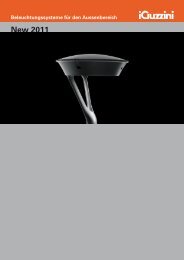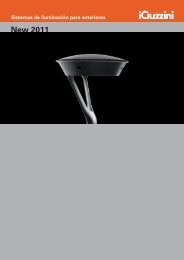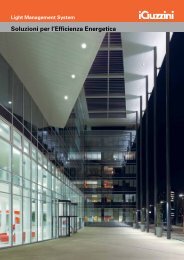You also want an ePaper? Increase the reach of your titles
YUMPU automatically turns print PDFs into web optimized ePapers that Google loves.
Energy efficiency<br />
The Kyoto protocol<br />
Energy efficiency is no longer just an option. The Kyoto protocol has stimulated governments<br />
from all over the world to approve legislation guaranteeing a more intelligent<br />
and aware use of energy in buildings. In March 2007 the European Union committed to<br />
achieving reductions of 20% in CO 2 emissions before 2020. This plan of action, known as<br />
“3x20 by 2020”, also includes an increase of 20% in the level of Energy Efficiency and<br />
20% of energy produced from renewable energy sources. To reach these objectives a<br />
number of real changes are required and goverments are intensifying their efforts<br />
to pass new laws and set and regulate standards for greater energy efficiency.<br />
20% of energy from<br />
renewable sources<br />
Reference standards<br />
This new trend of stricter energy<br />
efficiency began with the Kyoto<br />
Protocol. Laws like the Energy<br />
Policy Act in the United States have<br />
established the standards for our<br />
future energy.<br />
In Italy, Legislative Decree no. 192<br />
dated19/08/2005 published the<br />
European directive 2002/91/CE<br />
(EPBD) regarding energy yields in<br />
the building sphere and again, more<br />
recently with the Ministerial Decree<br />
26/06/2009 (national guidelines for<br />
building industry energy certification).<br />
On 18/06/2010 the new European<br />
directive (2010/31/CE) regarding<br />
energy performance in the building<br />
Photo: Gianni Berengo Gardin<br />
CO 2 emissions reduced<br />
by 20%<br />
industry was published.<br />
This recognises the importance<br />
of active control systems, like<br />
automated, control and monitoring<br />
systems aimed at saving energy.<br />
Initiatives in the private<br />
and public sector:<br />
• UNI EN 15232 standard<br />
This standard is used<br />
to assess the impact of<br />
building automation systems<br />
on active energy efficiency,<br />
by establishing the potential<br />
energy savings on<br />
heating and electricity<br />
depending on the type of building.<br />
Energy efficiency<br />
increased by 20%<br />
• The LEED® Green Building Rating<br />
System is a standard for<br />
energy certification and<br />
sustainability for the design,<br />
construction and running of<br />
buildings, created from voluntary<br />
contributions and applied<br />
at an international level in over 110<br />
countries. The LEED was originally<br />
compiled in the USA by the US<br />
Green Building Council, a no-profit<br />
association founded in 1993.<br />
The standard rapidly became<br />
accepted internationally and is now<br />
the most commonly used<br />
certification system in the world.<br />
3



